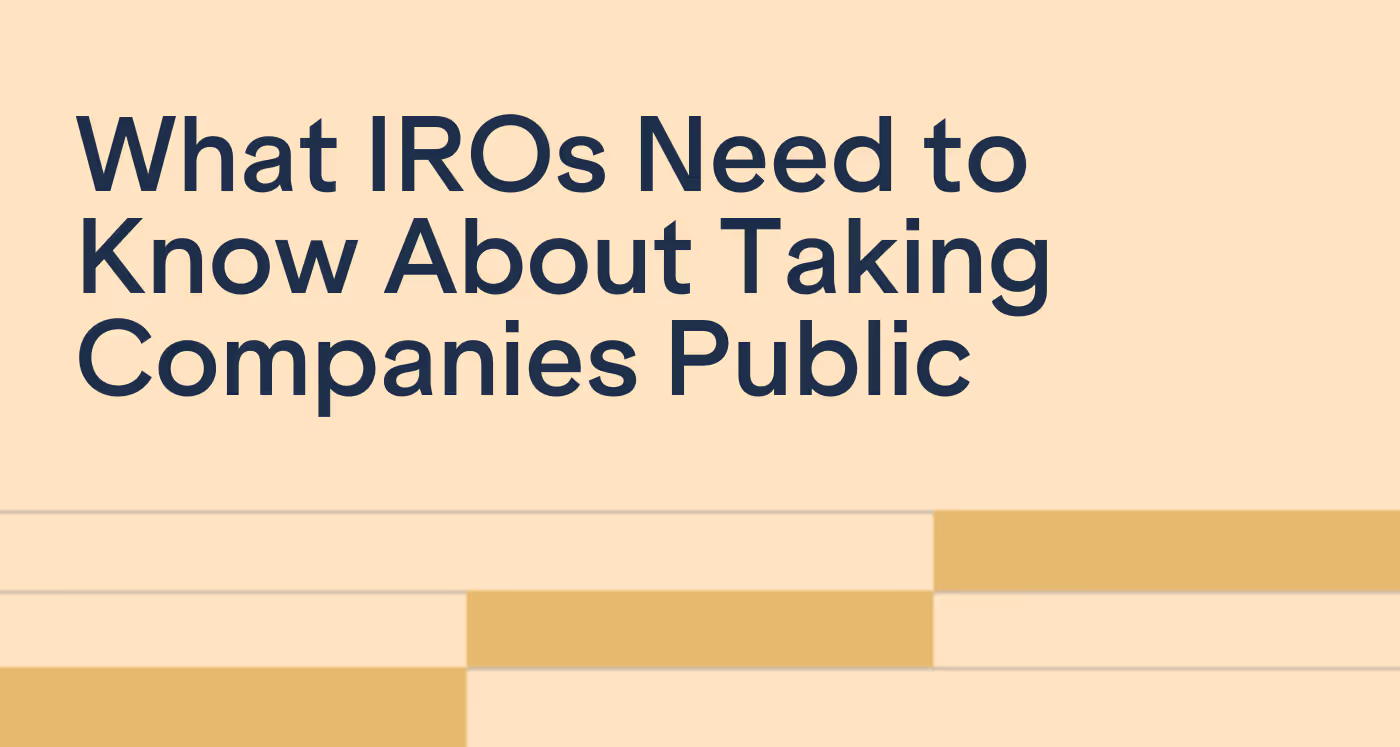
How to Build Effective Investor Targeting and Outreach Strategies for Small-Mid-Cap Companies
Learn how seasoned IR veterans are executing targeting strategies for small-mid-cap companies.

We've talked about the avoidable mistakes companies make post-IPO, but what can companies do pre-IPO to extend the longevity of their company? One concept that holds a startling resemblance from the software world to IPOs and investor relations is the concept of "IR Debt,” which is derived from an existing concept in software development known as "technical debt." It's also important to recognize that in addition to the IPO companies, this is also relevant to public companies experiencing turnover in IR.
If you're familiar with the software industry, you may have heard the term "technical debt" (sometimes called software debt, tech debt, or code debt). The term describes what happens when companies choose to expedite the delivery of a platform, feature, or project that later needs to be rebuilt or substantially updated.
Originally coined by Ward Cunningham, the metaphor was used to explain to non-technical stakeholders why he needed a budget for refactoring post-launch. He describes technical debt as such:
“With borrowed money, you can do something sooner than you might otherwise, but until you pay back that money, you'll be paying interest. I thought borrowing money was a good idea. I thought that rushing software out the door to get some experience with it was a good idea, but that, of course, you would eventually go back. As you learned about that software, you would repay that loan by refactoring the program to reflect your experience as you acquired it.”
Growth at all costs is tempting because you want to move fast, and it's uncomfortable to move slowly. But as we know, debt can be expensive and drastically slow you down, and potentially even send you in the wrong direction. Debt can sink companies with even the most innovative ideas.

Frequently, companies rush to market and want to make an instant transition into a mature public company. Becoming a public company is a great goal, but maturity often comes with time, proper strategy formulation, and the patience to do things right. Like building muscle, you need to invest the time and patience into something that will become strong and endure even the most volatile markets.
The same concept that Ward highlighted is true for the investor relations function as a company moves from private to public - decisions you make hastily today with the goal of speed-to-public markets will accrue interest, potentially crippling the potential of even the best companies.
The debt you create with a speed-first mentality can be due to multiple factors. For example, if there is turnover at a company within investor relations or management, then there is no business continuity within the IR function. You may be in a position of having to start from scratch at the least opportune time to do so.
IR debt can also take the form of mismatched ownership, where large blocks of stock are placed with a few large institutional investors. During the IPO, this means reduced marketing expenses and more assurance in completing the sale, but this can result in a stock that isn't liquid and a shareholder base that lacks diversity and substantially increases risk. IR teams will be paying back the debt for years to diversify their shareholder base after the fact.
Similarly, IR Debt can take the form of a market and shareholders that are not completely confident in your company's story or strategy. They were drawn to the initial offering, but that's not necessarily what causes them to stick around - and inevitably, shareholder retention drops. IR teams will then need to reinvent the pitch, find potential new investors from a limited base, and spend their time selling when they could be building stronger relationships. Continuous improvement > rebuilding your program every few years out of necessity.
Get the Guide: Expert’s Top Tips For IR Storytelling and Corporate Communications
As Ward said about technical debt:
"I think, with the idea that you could write code poorly with the intention of doing a good job later and thinking that that was the primary source of debt. I'm never in favor of writing code poorly, but I am in favor of writing code to reflect your current understanding of a problem, even if that understanding is partial."
The same can be said for investor relations pre and post-IPO. Building a solid foundation for your IR program requires time, thought, and intentionality. Take the time to form a thesis about the right strategy for your company - lay the foundation - and then build on it. Things can and will change, and no one can perfectly predict the behavior of the markets (or your company for that matter). If you understand your target investor, have a strong company story, a plan to deliver shareholder value over time, and nurture the proper relationships, your IR debt can be a manageable expense.
Chasing speed with the intention of being able to come back and pay the debt later brings the risk of it coming due when you can't pay it.
Deciding to take a company public is often an intensive journey that takes long-term planning and strategy, and the better prepared you are, the faster you can respond to areas of opportunity within the capital markets. Preparation on the IR front is not something that should be left as an afterthought to the legal, financial, and operational considerations that take up the most mindshare in the months or years leading up to a public offering. Your IR program is only as solid as the foundation you build it on.
Learn how Irwin provides a foundation for public companies to scale sustainably.

Learn how seasoned IR veterans are executing targeting strategies for small-mid-cap companies.

Elizabeth Librizzi breaks down the secrets of buy-side corporate access to help investor relations professionals utilize buy-side firms.

What IROs Need to Know About Taking Companies Public: Insights from award winning investor relations thought leader Catherine Buan.